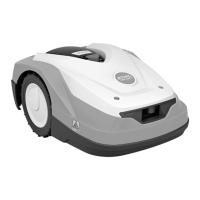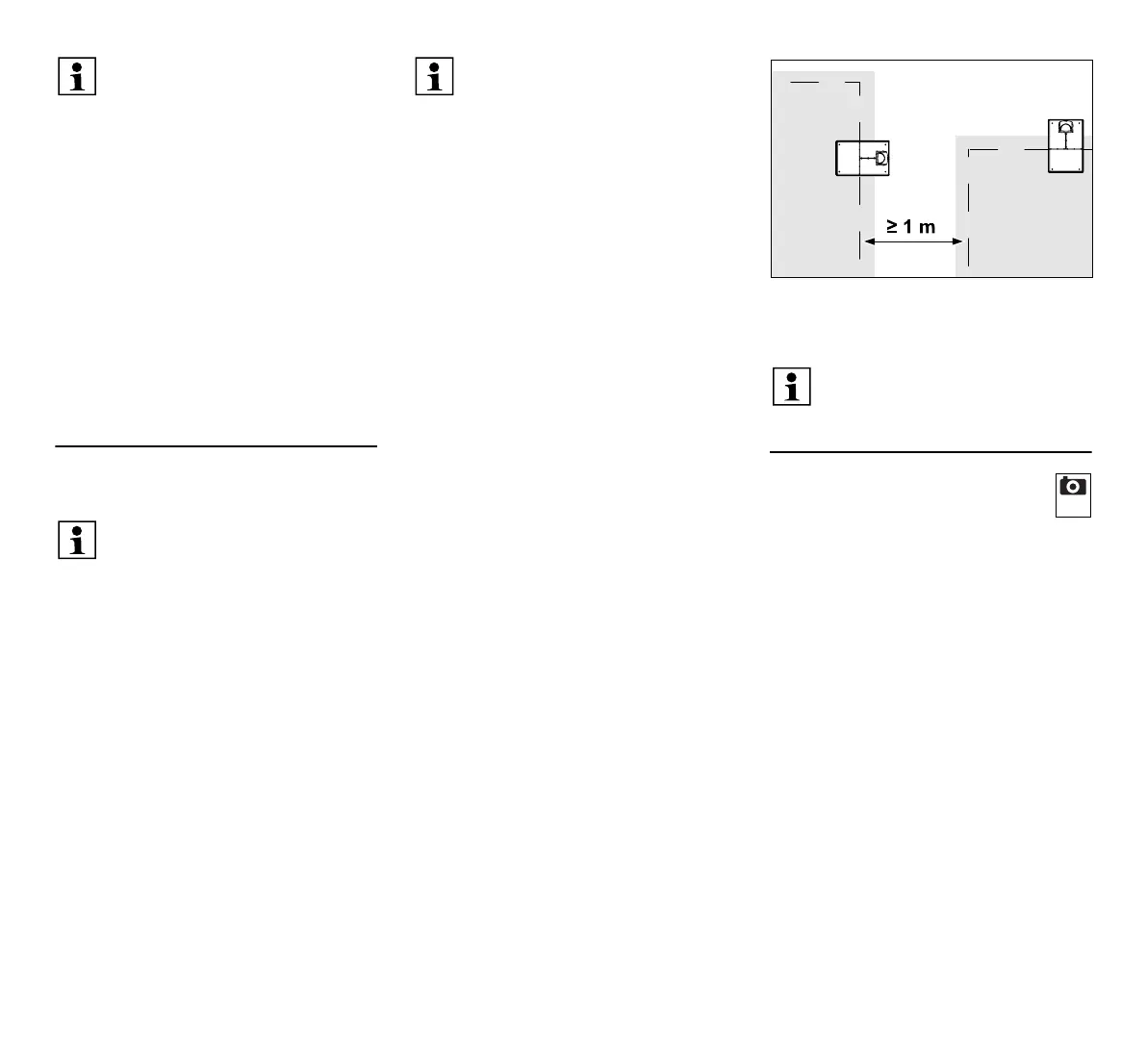0478 131 9965 A - EN
146
12.1 Planning routing of the perimeter
wire
● Determine the location of the docking
station.(Ö 9.1)
● Either remove obstacles from the
mowing area, or include no-go
areas. (Ö 12.9)
● Perimeter wire:
The perimeter wire must be routed in a
continuous loop around the entire
mowing area.
Maximum length:
500 m
● Corridors and secondary areas:
For automatic mowing, join all parts of
the mowing area by means of
corridors.(Ö 12.11)
If there is insufficient space to do so,
secondary areas must be
installed. (Ö 12.10)
● Observe the clearances when routing
the perimeter wire (Ö 12.5):
for adjoining areas that can be travelled
on (stepped area height of less than +/-
1 cm, e.g. paths): 0cm
for corridors: 22 cm
for high obstacles (e.g. walls, trees):
28 cm
minimum wire clearance in confined
areas: 44 cm
or water features and potential sudden
drops (edges, steps): 100 cm
● Corners:
Avoid routing at acute angles (less than
90°).
● Guide loops:
If offset drive home (passage) is to be
used, guide loops must be installed for
corridors or for the external docking
station. (Ö 12.12)
● Reserve wire:
Reserve wire should be installed at
several points to make it easier to
subsequently change the routing of the
perimeter wire. (Ö 12.15)
Mowing areas must not overlap. Maintain
a minimum clearance of ≥ 1m between
the perimeter wires of two mowing areas.
12.2 Making a sketch of the
mowing area
During installation of the robotic
mower and docking station, it is
recommended to make a sketch of the
mowing area. A page has been provided at
the start of this instruction manual for this
purpose.
The sketch should be modified in the event
of subsequent changes.
Content of the sketch:
– Contour of the mowing area including
important obstacles, borders and any
no-go areas which the robotic mower
must not mow. (Ö 27.)
– Position of the docking station (Ö 9.8)
– Position of the perimeter wire
After a short while, the perimeter wire is
overgrown and is no longer visible.
Make a note of the routing of the wire
around obstacles in particular. (Ö 9.9)
The wire clearances specified in
this instruction manual are adapted
to the routing of the perimeter wire
on the lawn area.
The perimeter wire can also be
buried up to a depth of 10 cm
(e.g. using a cable-laying machine).
Burial in the ground generally
influences signal reception,
particularly if flagstones or paving
stones are laid over the perimeter
wire. The robotic mower may travel
along at a greater offset to the
perimeter wire, requiring more
space in corridors, confined areas
and when travelling along edges.
Adapt the wire routing if necessary.
Study the installation examples at
the end of this instruction
manual. (Ö 27.)
Include no-go areas, corridors,
secondary areas, guide loops and
reserve wire during routing of the
perimeter wire in order to prevent
subsequent corrections.
For small mowing areas with a wire
length of less than 80 m, the
AKM 100 supplied must be
installed together with the perimeter
wire. (Ö 9.9)
Coiled up residual pieces of
perimeter wire can cause
malfunctions and must be removed.
1

